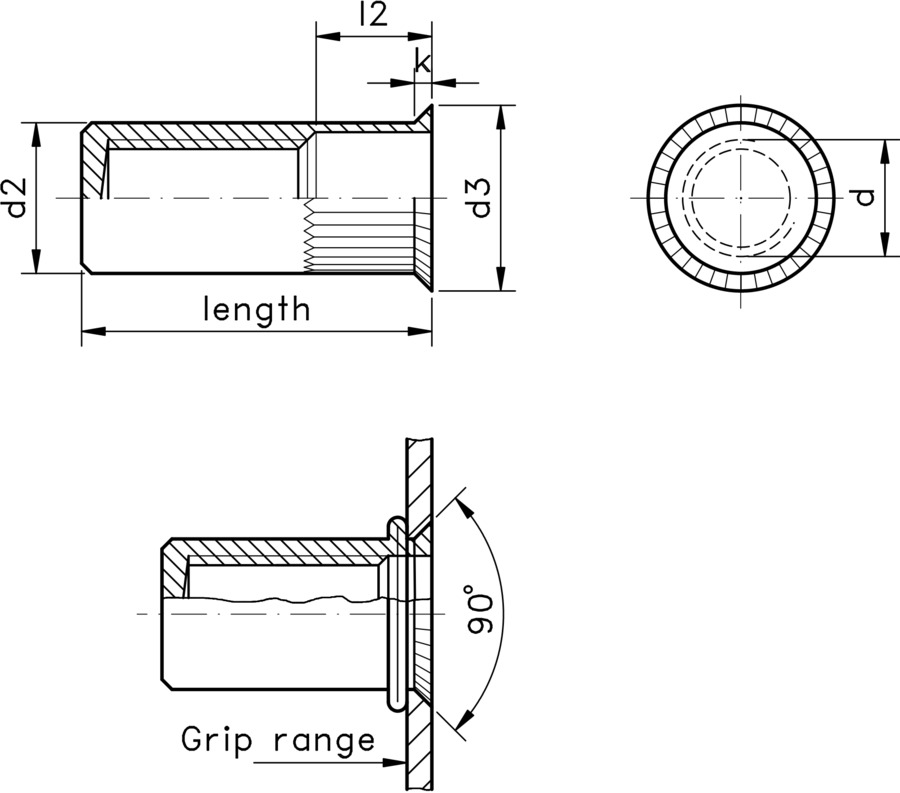Rivet Nuts - Countersunk Head with Knurled Shank, Closed Type
This product guide contains the specification for blind rivet nuts with a countersunk head, a straight knurled shank and a closed end. These are a stock item available from Westfield Fasteners.
Blind rivet nuts are installed by inserting the rivet nut into an appropriately sized and shaped hole within the sheet material. The rivet nut is compressed using a pneumatic powered or hand rivet nut tool, gripping it firmly to the sheet material.
In the compression process, the thinner walled section without the thread collapses to form a collar on the blind side of the sheet material. This prevents the nut from being pulled back through the hole and fixes it securely to the sheet material.
Like blind rivets, rivet nuts do not require access to the back of the material. Features like knurling or the hexagonal shaped body within a hexagonal shaped hole will help to prevent the rivet nut from turning.
This particular type of rivet nut features a full countersunk head, a straight round knurled shank and a closed end, and is a more common type of rivet nut. The countersunk head allow for these rivets to sit flush when used in applications, allowing for a neat finish where the rivet nuts are visible, making them appropriate for most applications, including connecting soft or brittle materials to a rigid backing. The knurling/serrations will help to grip the nut to the connecting materials and stop it from turning. This type of rivet nut is used in a multitude of industries such as aerospace, automotive, rail, HVAC, white goods, electronics, DIY and general engineering.
Table 1 below gives dimensions for stainless steel variants in available sizes from M3 to M12, along with information on sheet material thickness, pre-drilled hole sizes and tensile strengths. Table 2 provides similar information for zinc plated steel items.
Please note that the table data below supply typical strength values, head dimensions and overall length, which may vary between batches. Any tightening torque specifications given are guide values depending on the material of the original component and should be checked by testing.

